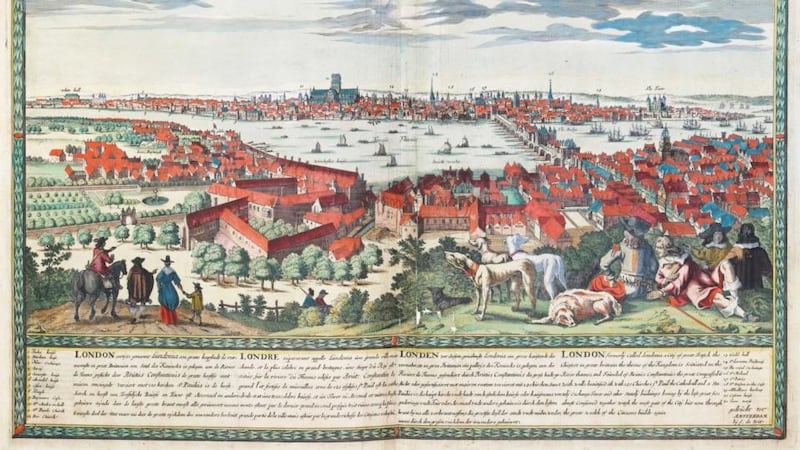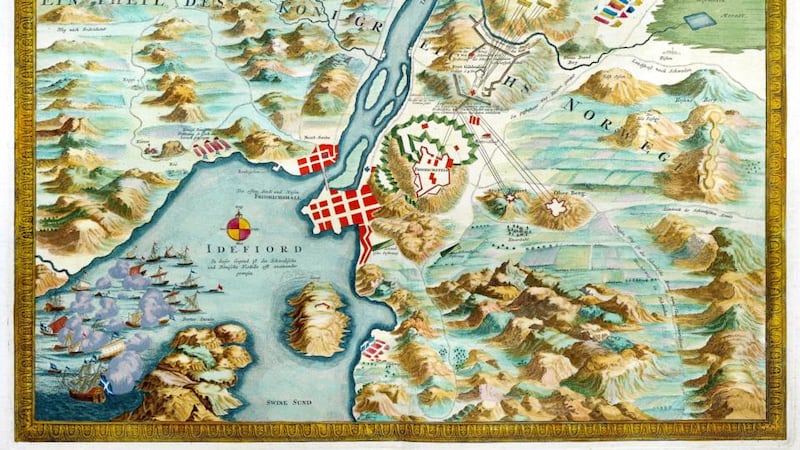Fancy a stroll through the streets of Paris or London as they would have looked in 1650? How about flying over a 3D battle plan showing the placement of armies when Sweden went to war against the Germans in 1718? Or maybe you would like to read an early translation into Irish of Aesop’s Fables, Lewis Carroll or Anton Chekhov?
All of this becomes possible when centuries-old archived books, maps and documents become available through a coming-together of humanities research and the latest digital technology. Best of all, most of these digitised resources are being made available to the public and academic community free of charge.
Many of Ireland's third-level institutions are engaged in this digitisation of archived material, and the pace at which archives are opening up is quickening.


Last December, University College Dublin launched the website duchas.ie. Some 64,000 handwritten pages of folklore and local history have gone online to date, taken from the Schools' Manuscript Collection, the writings of Irish school children collected in 1937-1938, says Prof Ríonach uí Ógáin, the director of UCD's National Folklore Collection.
“There is great public interest in children writing about their own area. But it is also an unparalleled resource for researchers,” she says. “This is only the first step towards making the main manuscript collection available online.”
Also in December, the Royal Irish Academy released archived material in two tranches, Corpas na Gaeilge 1882-1926 and the Online Archive of Irish Language Religious Texts 1600-1882. The former opens up early translations into Irish of Aesop's Fables and the works of Lewis Carroll among others, says Deirdre D'Auria, the assistant editor of Foclóir na Nua-Ghaeilge, the historical dictionary of modern Irish. The academy released the translations to open up more archived material, but also so previously unknown words in older forms of Irish could be included in the dictionary, she says.
NUI Maynooth also has a long-running digitisation programme, An Foras Feasa. According to its director, Dr Thomas O'Connor, it has a number of projects under way, including the digitisation of the Salamanca Papers, a Spanish-language archive detailing the Irish colleges in Spain from 1592-1951. The accumulated archived material held at Salamanca, the last of these colleges to close, is now in Ireland after the Spanish dictator Franco allowed it to be shipped here.
“There are all sorts of accounts in there,” he says, including correspondence, records of the students, information on property and more. “This material will be available on the web internationally.”
They are also working with Dublin City University and the Royal College of Surgeons in Ireland to digitise the literary archive of novelist Mary Devey.
“The key behind all of this is the interaction between humanities and computer science and technology,” says Dr Micheál Ó Siochrú, assistant professor in modern history at Trinity. “It is about how we best exploit digital material in the computer age. And on a point of principle, we want everything to be open-source, free-access.”
Availability of resources is an issue, however. Many older documents in these archives are handwritten, and computer systems may not be able to read the text, says D’Auria. “Some of the older ones have to be done by hand. You have to teach the computer to recognise the different letters from older scripts. It is much easier with newer scripts.” Once done, however, the manuscripts are opened up for interrogation, enabling searches for names, key words and more.
The costs are high, however, and so collaboration is one way to bring the work forward, says Dr Sandra Collins, director of the Digital Repository of Ireland project led by the Royal Irish Academy. It has a number of university partners, and their goal is to develop a national repository with access to all the contributors. It is not just about providing access – it is also about the preservation of old, fragile documents, she says.
THE FAGEL COLLECTION: TRINITY GOES DIGITAL
Trinity will today announce a new digital archive project involving the remarkable Fagel Collection, a huge collection of books, maps and other documents purchased by the university in 1803.
It was collected over 150 years from 1650 by the Fagel family, says Dr Micheál Ó Siochrú of Trinity. “The Fagels were the head of the civil service in the Dutch republic. They were the people overseeing the running of the Dutch government in its golden age. They commissioned maps in areas of interest to them and the government.”
The range of material in the archive is staggering. There are maps from around the globe illustrating parts of every continent and even Antarctica. There are nearly 15,000 maps and cartographic items in the collection, many in full colour. There are battle plans showing what happened during major conflicts from 1650 to 1800. There are sea atlases, maps of the stars and 900 detailed urban street plans.
“The maps represent only 2-3 per cent of the whole collection,” says Prof Ó Siochrú.
The Fagels fled the Netherlands when Napoleon invaded in 1800, taking their maps and books to Britain, from whence Trinity purchased them as a complete library.
The ambitious project involves taking the maps, battle plans and streetscapes and creating 3D replicas based on the original images, says Prof Ó Siochrú. It is a joint effort involving the departments of history, geography and computer science, with the support of Google Maps.
It should be possible to have a virtual walk through the streets of London as it appeared in the map left (middle) or to fly over the terrain on which great European battles such as that depicted left (top) involving the armies of Sweden and Germany as they drew swords in 1718.
Trinity's Co Down survey (downsurvey.tcd.ie) also shows the power of digital systems to open up archived material. The Down Survey of Ireland, undertaken in the years 1656-1658, sought to measure all the land forfeited by the Catholic Irish during the plantation.
Software developed by Bulgarian collaborators was used to translate the 17th-century English into its modern form, and this can now be searched for names and key words, Prof Ó Siochrú explains. This “entity extraction” can be used to spot events or ideas, for example language used to describe violence.
The team also included Geographic Information Systems capabilities, so it is possible to associate names or places with map locations.
These technologies are now going to be merged with the Fagel source maps to provide even more possibilities, particularly three-dimensional access.









